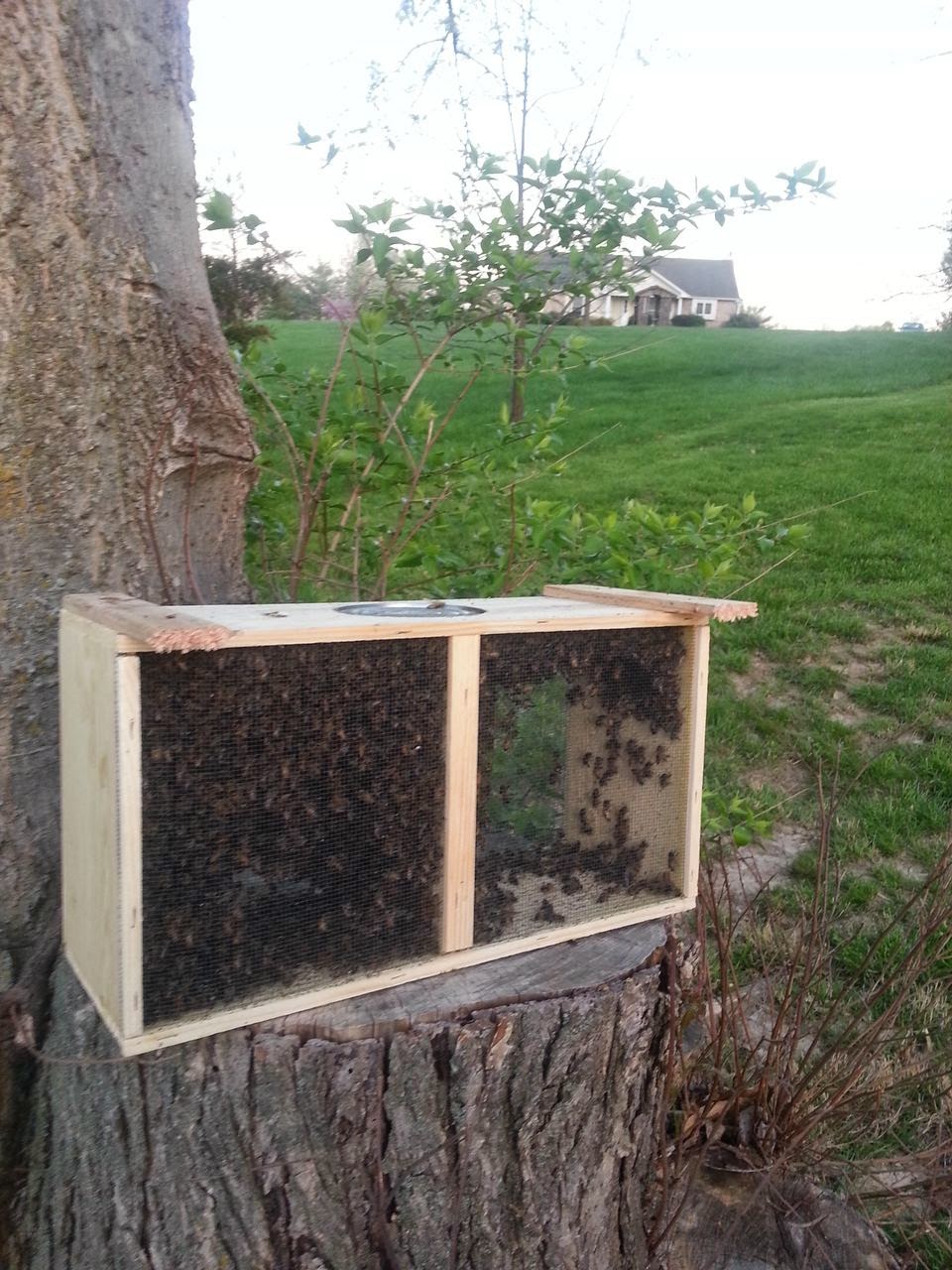Today I completed my first hive inspection and it went very smoothly. Not only did the colony successfully release the queen, but I actually had the chance to lay eyes on her as well! Locating the queen on any hive inspection is basically the main objective. I thought locating her the first time was going to be a little difficult, but she clearly stands out from the rest of the colony. She was actually quite easy to spot!
Not only was the queen released, but she has also started to lay eggs. I saw quite a few of eggs in many of the cells, however thank god I didn't see any queen cups or queen cells. I also never saw any capped brood, but its still probably a little too early for that. I'm good with seeing eggs at this point, at least I know the queen is doing her job well! Along with eggs, I saw a lot of nectar and stored pollen. The bees appeared to have drawn out a total of three frames so far, not too bad.
I've also noticed the bees don't seem to favor the sugar syrup very much, considering they haven't really touched it at all. However, they are eating the pollen patty pretty well. Hopefully, more plants will bloom in the area, not too many flowers at this point around my parents' home. They had a Crab Apple Tree, but most of the flowers have fallen off due to rain and storms. However, there are some giant rose bushes that could be blooming any day now. So I'm crossing my fingers!!
I was a bit nervous at first, because when I first walked out to the hive today, there weren't nearly as many bees on the front of the hive as usual. But, it has also been a cloudy, overcast afternoon, with possible rain showers this evening. But during the inspection, it appeared that most of the bees were actually in the hive. However, they remained very calm during the entire inspection. I never once felt threatened by the colony.
 |
| One of the ladies. I rescued her from the watering bowl outside the hive. A little wet, but at least she survived the swim! |
 |
| Looking down in between the frames during the inspection. The ladies have drawn out almost three frames so far. You can see the drawn out honeycomb from here. |
 |
| One of the three frames I pulled out. Some workers have full pollen baskets, others were cleaning out cells, some were even building new cells onto the foundation. Very busy little ladies. |
 |
| Another picture of a frame. Between a couple of the workers, you can spot a cell with some orange pollen in it. |
 |
| I completed the main objective during my first hive inspection: locating your queen. She is definitely alive and well. I spotted eggs in some of the cells during the inspection. She's clearly doing her job quite well. Also notice how different the queen looks from all the other bees in this photo. Note her long, extended abdomen. Almost her entire abdomen is filled with eggs, that explains her length. |
 |
| Another picture of the queen during the inspection. Lots of nectar and pollen in cells in this photo as well. |
 |
| Another photo of the queen on a frame. |
 |
| The bees were building bridges during the inspection when I pulled a couple of the frames apart. They are amazing creatures for sure. |
~Nick



















































